Betws-y-Coed Is one of the main gateways to Snowdonia, but it’s forested setting is very different in character to the wild open mountains of much of the National Park. Its hilly wooded setting, close to where three rivers meet for their final journey north to the Irish Sea, was home to one of the first artists’ colonies in Britain in the 19th century. This, its position on the key A5 London to Holyhead road and the building of the Conwy Valley railway line in 1868 all combined to make Betws-y-Coed one of the tourist honeypots of North Wales.
Betws-y-Coed now has the biggest concentration of accommodation in the whole of the National Park, with seemingly every other house a B&B. The most popular mountains – the Snowdon massif and the nearby Glyder range – are a ten mile ride west up the A5. The village is also an ideal base for exploration of the Conwy Valley – the coast is only fifteen miles away. Many visitors will tend to eat and sleep in Betws, and spend a most of their time away in the mountains. And although Betws doesn’t have any of the best mountain walks on its doorstep, there are many rewards and surprises to discover in the surrounding forests and valleys.
Betws-y-Coed Village
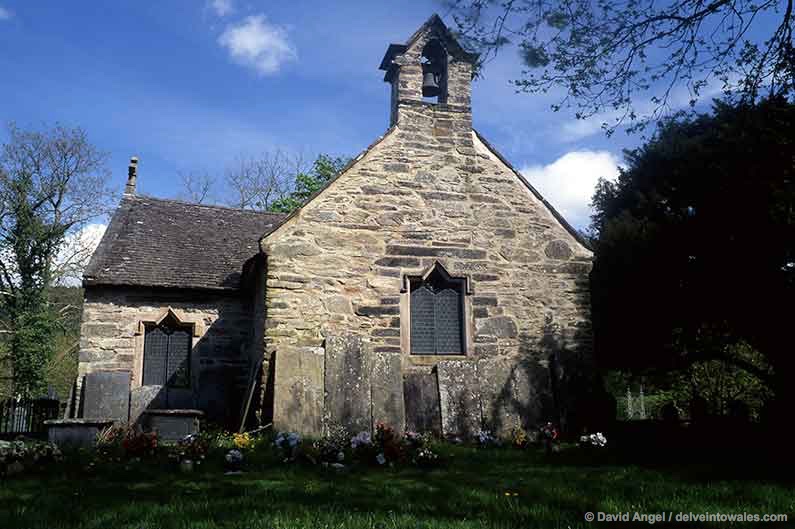
Most of Betws-y-Coed is clustered along the A5, or Holyhead Road, with a few side roads. The first of these on the right (Old Church Road) leads to the 14th century St Michael’s Church, the ‘bede house’ or ‘prayer house’ (betws) in the woods (coed) that gave the village its name. The second turn on the right – Station Road – leads to, you guessed it, the adjacent Conwy Valley Railway Museum, and the Snowdonia National Park Visitor Centre around the corner.
By the time you pass the Royal Oak Hotel on the left you’ll have seen what makes Betws tick: B&Bs, outdoor stores and Welsh craft shops. The Royal Oak and the Stables bar next door are the busiest places in town most nights, with the outdoor tables often full on summer evenings, and the Cotswold Outdoor shop in the same complex has a huge section of gear: the mountain boots I bought there twelve years ago are still going strong.

Betws y Coed has hardly changed in the 35 years since I first visited it in the early 1980s, and I’ve always had a soft spot for it. The clientele is split between senior visitors on coach tours who stop for a cream tea and a look around a few of the craft shops, and the hiking, biking and activity fraternity who bed down here for the night.
After a few more shops and restaurants, turn right and cross the narrow stone bridge, Pont y Pair, the Bridge of the Cauldron, with a thundering waterfall one side and much calmer water the other. This is the Afon (river) Llugwy. The rocks above the river to the left are a great picnic spot, or to sit and enjoy a bag of fish and chips from the Hen Siop Pont Y Pair takeaway on the corner of the bridge.
Back on the A5, within 200 yards of Pont y Pair you’re down to one built-up side of the road, with more B&Bs and a Chinese restaurant, the Dragon, before you’re back out in the country.
Around Betws-y-Coed

There’s only one place to really appreciate the setting of Betws-y-Coed, and for this you need to cross to the other side of the Conwy Valley. Follow the steep mountain road off the A470 towards Capel Garmon, stopping at a terrace of houses about a mile up. From here, climb the steps to the right of the houses, then cross the metal stile and turn right. Follow the path for about 500 metres until you reach open moorland. You’ll soon be greeted by a fantastic panorama, with the verdant Conwy Valley and Llanrwst in front of you and, to your left, Betws-y-Coed nestling at the foot of the Gwydyr Forest and the eastern edge of Snowdonia, with the closest peak, Moel Siabod, dominating the view, and the distinctive jagged outline of Tryfan to the right.
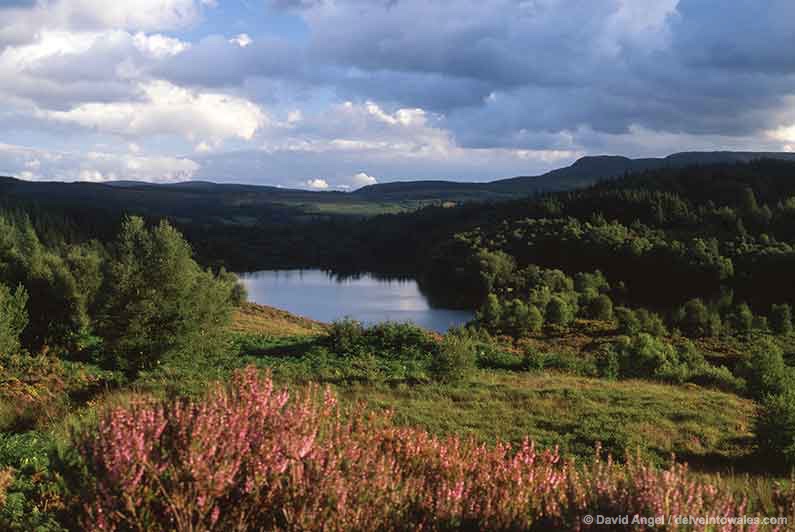
Hidden high in the hills above the village is the best walk from it, up to Llyn Elsi, a remote lake in the middle of the Gwydyr Forest.
The other walks from Betws y Coed follow the course of two of the rivers that meet there.
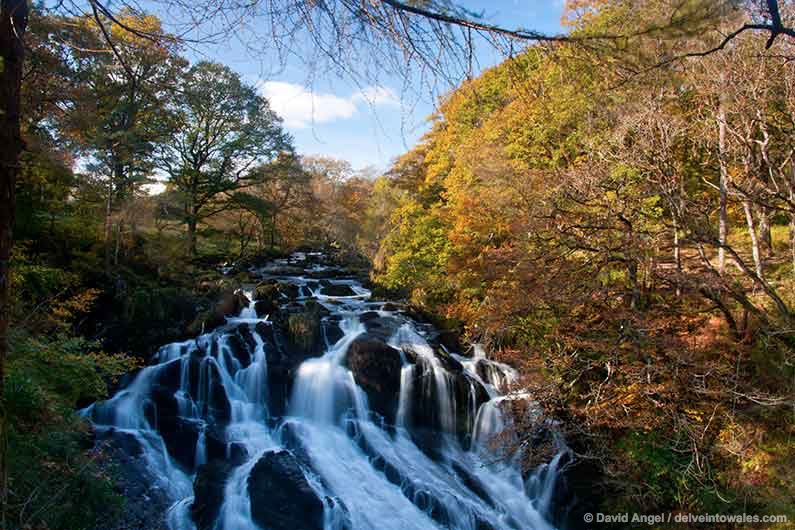
Heading west from the village, it’s possible to follow a combination of minor road and forest paths to Swallow Falls, the Llugwy powering over a series of drops on its way down to Pont y Pair. You get several glimpses of the falls through the trees as you walk above the north bank of the river, and can walk very close to the top of the falls on the same side. Alternatively, most visitors arrive courtesy of the A5 out of Betws, and next to the road there is paid entry to the falls and viewing platforms. Across the road from there is the Swallow Falls Hotel, a former coaching inn, and Betws-y-Coed’s youth hostel.
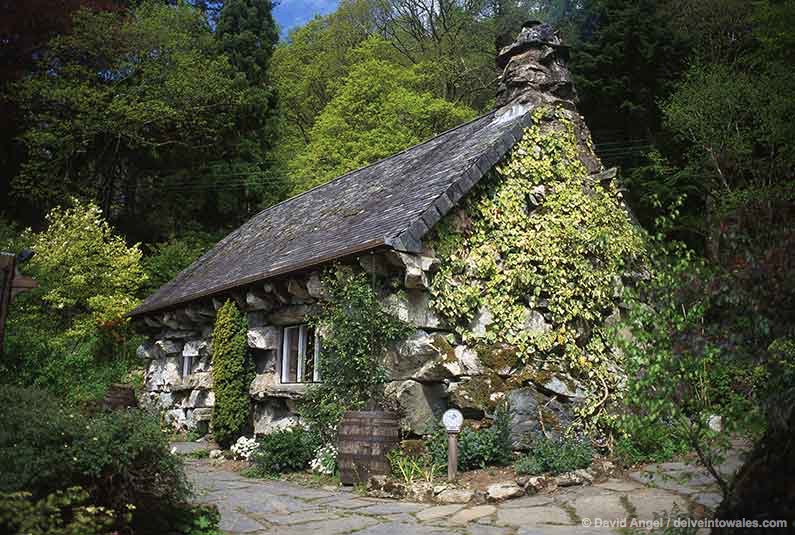
Just beyond Swallow Falls, the A5 crosses the much quieter Llugwy, and passes an unusual stone-built house on the right. This is the unflatteringly named Ugly House, Ty Hyll, a cottage whose walls are built from large boulders that is home to the Snowdonia Society, a wonderful tearoom and peaceful garden. You can also reach Ty Hyll by following the continuation of the path from the north side of Swallow Falls it’s a ten to fifteen-minute walk.
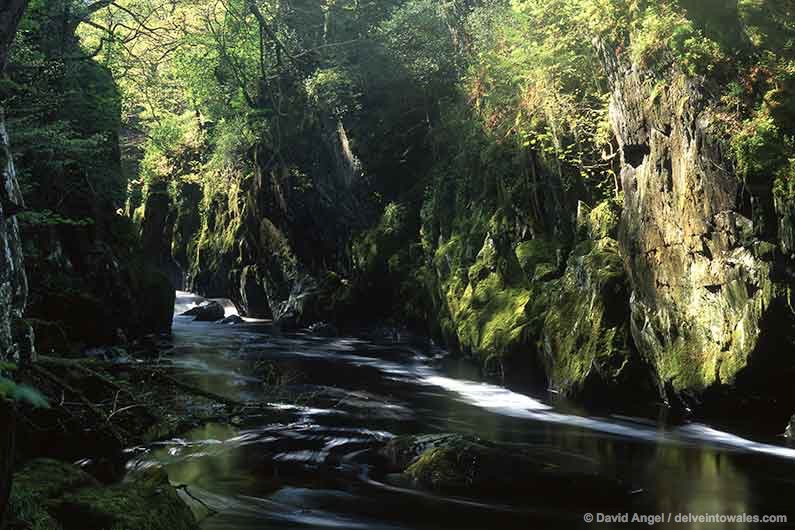
Betws’ other attractions are found along the course of the River Conwy. The first, Fairy Glen (Ffos Noddyn in Welsh), is off the A470 as you head towards Blaenau Ffestiniog. Turn left off the main road at the Fairy Glen Hotel, pay the 50p fee and follow the path, which leads across fields to a dramatic narrow ravine, reachable down narrow, often wet steps. It’s particularly beautiful in spring or autumn when the foliage is its most colourful.

Its neighbour, Conwy Falls, is about a mile along the A5, with a visitor centre and café on the corner of the road to Penmachno. The building was designed by Clough Williams-Ellis, who was responsible for the Italianate village of Portmeirion an hour away on the coast. Again, you pay a small fee to access the Falls, which are a short walk down the hill. The river divides at the top of the falls, cascading down either side of an outcrop of rock before reuniting at the bottom.

If you’re driving back to Betws, pull over for a few minutes at the generously-sized lay-by, with the view up the Lledr valley to Moel Siabod, which was one of the inspirations for the artists’ colony in the village.
Betws y Coed Activities

Betws y Coed has always been a popular base for walkers and hikers heading for the main mountains and routes of Snowdonia, which we’ll be covering in other features soon.
It has also long been a favourite with mountain bikers who come to tackle the Gwydir Mawr (previously known as the Marin) Trail around the forests and lakes to the north of the village. http://www.go-below.co.uk
However, the options have become far greater for visitors to Betws over the last few years.
Ten miles down the Conwy Valley at Dolgarrog, you can now surf in an inland lagoon at Surf Snowdonia (https://surfsnowdonia.com) – they also offer lessons for beginners and courses.
Much closer to Betws, Zip World Fforest is one of several zip-wire attractions that have opened up around the fringes of Snowdonia in the last few years. The others offer the chance to ride at 50 miles (80 km) per hour from mountain tops over former slate quarries.
This one takes you 60 feet (20 metres) up into the treetops, and there are also rope walks and rides including a Plummet from the Summit which should tell you what you need to know.
Another side to North Wales – its underground – is slowly being opened up for exploration, and a disused slate mine has recently been opened at Conwy Falls by Go Below (http://www.go-below.co.uk). Here you can zip-line, abseil or boat across a lake on a series of challenges. We’ve explored another slate mine a few miles away and it is an incredible experience seeing such a starkly beautiful aplace abandoned and untouched for over a century.
Further Afield
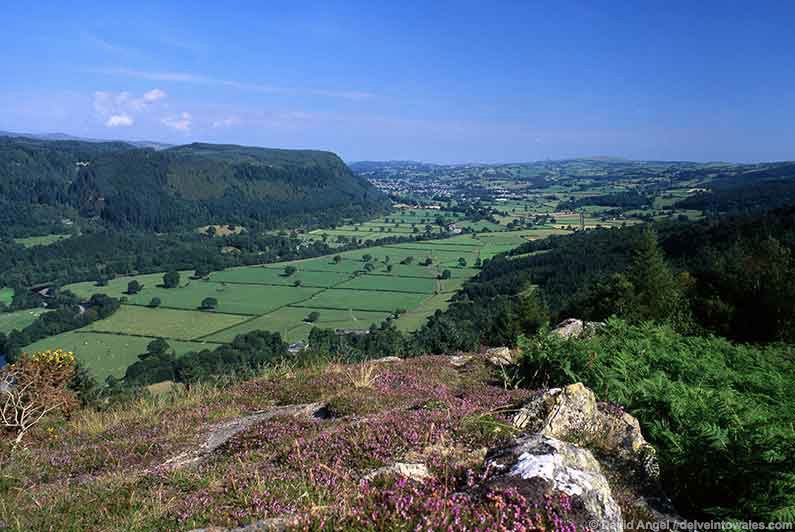
The Conwy Valley is worth a couple of days’ leisurely exploration, starting with the nearby town of Llanrwst, its chocolate-box riverside tea shop Tu Hwnt I’r Bont and the nearby Gwydir Castle (http://www.gwydircastle.co.uk), one of the best-preserved Tudor houses in the country, where you can also stay.
One of the finest gardens in the country, Bodnant Garden (https://www.nationaltrust.org.uk/bodnant-garden), is a few miles further down the valley at Tal-y-Cafn, with spectacular views across the valley to the remote Carneddau range of Snowdonia.
A few miles further along, Conwy Castle and walled town are a short drive across the river, with the biggest seaside resort on the North Wales coast, Llandudno a short drive beyond.
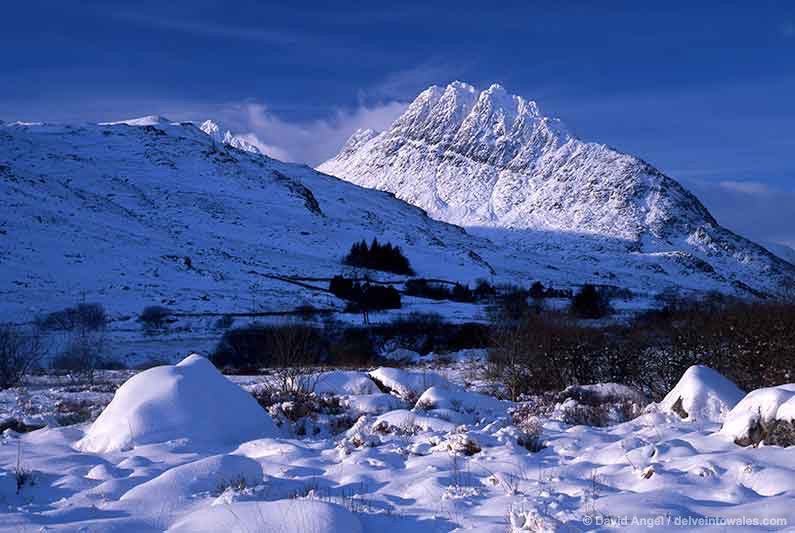
The A5 road west out of Betws-y-Coed becomes one of the best drives in the country. After passing Swallow Falls and Ugly House it runs through the straggling long village of Capel Curig before climbing into the Ogwen Valley, where the road passes between the mighty Tryfan on one side and the Carneddau mountains on the other, eventually revealing glimpses of Glyder Fawr and Glyder Fach before turning down Nant Ffrancon towards the coast.

You can leave the A5 back at Capel Curig, taking the A4086 towards Llanberis. Immediately after Plas y Brenin, the National Outdoor Centre, if it’s a clear sunny day you’re greeted by one of the most iconic sights in Wales – the Mymbyr lakes down in the valley, looking up to Mount Snowdon and its horseshoe of neighbouring peaks. From here it’s around 4 miles – 6 km – to the start of some of the paths to the summit.
Betws-y-Coed Hotels
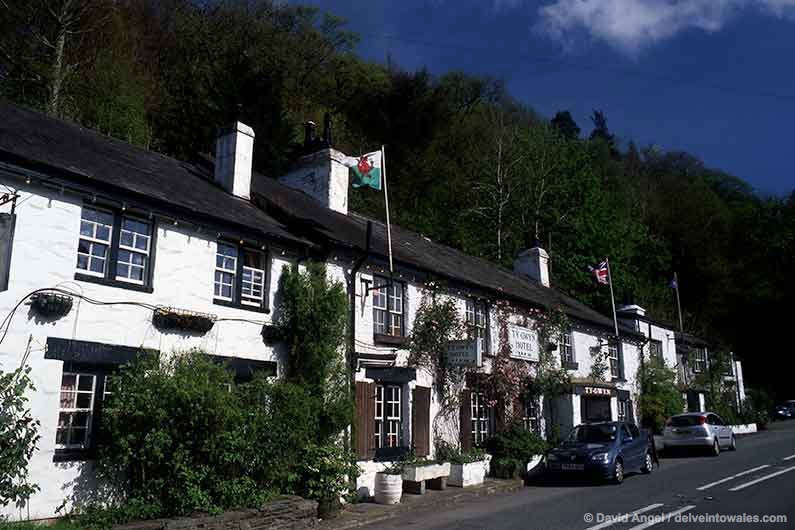
Betws-y-Coed hotels have some great deals through the season, and you can get some fantastic last-minute bargains, especially if you opt to stay during the week when occupancy is normally lower. Hotels in Betws-y-Coed also tend to fill up on weekends during the off-season (autumn, winter and early spring).
Most Betws-y-Coed hotels were built in the Victorian era, and are fine traditional characterful old buildings, very much part of the heritage of the village. The Royal Oak Hotel in the heart of the village was an old coaching inn, expanded to cater for visitors attracted by the artists colony in the mid 19th century and the scenery they depicted in their paintings. A short walk towards the station, the Glan Aber and Gwydyr are also grand 19th century hotels.
Most Betws-y-Coed accommodation is along the main street, Holyhead Road, with some hotels and guest houses on the A470 main road towards Llandudno and in the side streets of the village. One or two hotels in Betws-y-Coed were built more recently, including the Edwardian (early 20th century) Craig-y-Dderwen Riverside Hotel and the Best Western Waterloo, both a short walk from the centre of the village.
Betws-y-Coed Bed and Breakfast

If you want bed and breakfast Betws-y-Coed is the place to visit. Many of the fine old Victorian houses in the village are used for bed and breakfast accommodation. They are also known as guest houses, or by their common abbreviation, B&Bs. They’re always popular, and usually work out less expensive than hotels. They’re smaller and more intimate, and a great place to make friends with fellow travellers.
Betws-y-Coed has a great choice of B&Bs, and we’ve stayed in most of them over many visits down the years. There are a small number of budget options, with many in the three-star, mid-range bracket, so rooms often work out around the £60 a night mark. The most luxurious B&Bs tend to charge closer to £90-100.
We’ve stayed at one B&B in Betws-y-Coed a great many times – with our lovely friend Ruth at Dolgethin – where we have many happy memories.
Betws-y-Coed Restaurants
The busiest place in Betws of an evening is often The Stables, the pub attached to the Royal Oak which serves the whole range of British pub fare. The Royal Oak’s restaurant, The Grill Room, has a different menu, and more of a bistro feel.
Talking of bistros, Bistro Betws-y-Coed is a short walk up the hill from the Royal Oak, and one of our favourites in the whole region. I’ll always remember it for serving up one of the best lamb shanks I’ve ever had a couple of years ago.
It’s great to see the eating options in Betws diversifying, and one of the most recent arrivals is Olif (pronounced ‘olive’), a tapas bar using Welsh ingredients (except for the olives, that is).
Getting There
By Car
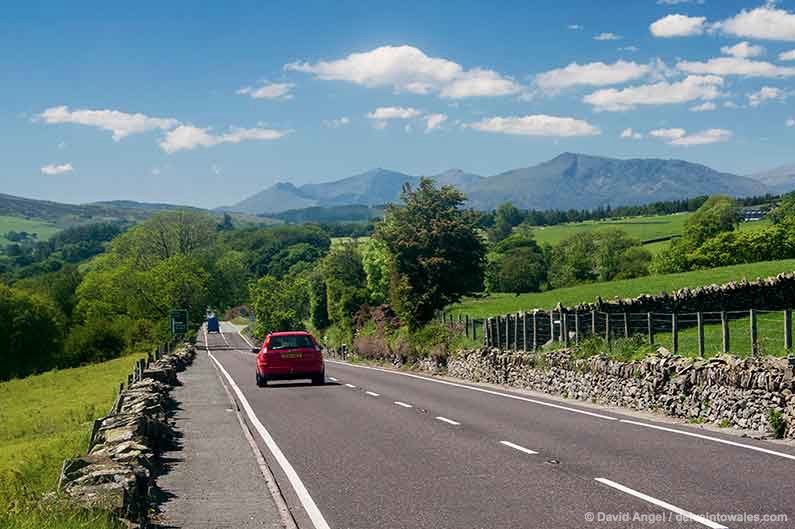
Two of Wales’ main roads – the A5 and A470 – meet on the edge of Betws-y-Coed, so getting there by car is fairly simple.
The A470 is the route you will take if coming from South or Mid Wales, following the road up past Dolgellau and Blaenau Ffestiniog, then turning left onto the A5 into the village.
The A470 is also the route of choice if you’re setting out from the north of England. Join and follow the A55 North Wales Expressway, turning left onto the A470 at the Glan Conwy roundabout and following it up the Conwy Valley, turning right onto the A5 at the same junction you would use if approaching from the south.
The A5 is the best route if you’re setting out from the English Midlands, or anywhere to the south or east of there. Some friends from north-east Wales and the Liverpool area also use the A5 to get to Betws-y-Coed, either joining it from the A494 from Ruthin or the A543 which runs through Denbigh, the latter joining the A5 only a few miles from Betws-y-Coed.
By train
The Conwy Valley railway line between Llandudno and Betws-y-Coed is a lovely short scenic run. You should get a glimpse of Conwy Castle across the river before you reach the countryside, which is green and glorious much of the year, with the mountains of Snowdonia to your right. For much of the journey, the train passes close to the river Conwy
Most people travelling this route are more likely to travel down from Llandudno Junction station, which is on the North Wales mainline, and two stops down the track from Llandudno.
Trains are relatively infrequent – there are six a day, running every three hours.
It’s also worth checking in advance whether or not the line is open, as it is one of the more flood-prone lines in the UK.
By bus
If you’re travelling to Betws-y-Coed by bus, the Conwy valley from Llandudno has regular buses (roughly hourly) until late in the evening.
Beyond this, buses do run to other Snowdonia destinations, and services are good in spring and summer but fairly infrequent in the off-season. Buses to the Snowdon paths and Llanberis run hourly in peak season but only every couple of hours in off-season, and if you want to get to the village of Beddgelert you can make the journey four times a day, changing once.
